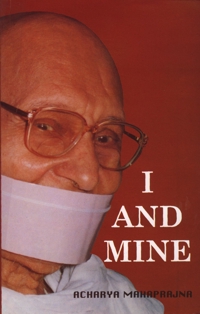
The history of religion is very old and will be in the making for a long time to come. In fact religion will last as long as the mysteries of life and death continue. Those trying to destroy religion are tired; on the other hand, religious publicity has been ever on the increase. Russia (former Soviet Union) has been trying to destroy religion for thirty- five years, but now the ruling party has admitted that, despite all their efforts, religion has, far from decreasing, in fact, increased. Religious faith has registered an upward swing in Russia during the past thirty-five years.
Religion is a natural human instinct. It helps man contemplate the unknown. It is the purity of our soul. In other words, to be liberated from passions or from attachment and hatred is religion. All else is delusion. Religion has not been the cause of terror, wars and assassinations. Fighting takes place where there are false values. For example, these days' politics is valued more than it is worth; hence, it makes people fight among themselves. Likewise, in the past, people attached false values to religion, which resulted in fighting.
Religion and its institutionalisation are two different things. Religion is amorphous and intangible, but human beings prefer the tangible. They have given tangible shape to knowledge in the form of books, to time in the form of clocks, and to God in the form of idols. The same thing has happened to religion. Man has invested religion also with a form. This is exactly what symbolism is. The nation is intangible but it is symbolized in the national flag. In order to make religion tangible, it has been turned into an institution. It is mentioned in one of the Upanishads that 'God felt lonely and, therefore, dualism was created, and by expanding the soul the world was created on the basis of name and form. The same attraction for name and form makes the intangible tangible.'
Jain, Buddha, Muslim, Christian, Hindu are all names and their corresponding institutions are forms of religion. Religion in itself is intangible but we perceive it through its name and form and it is for this reason that every religion has a distinct name and form. All fighting has taken place because of the name and the form. No wars took place because religion. In Jain religion fifteen types of liberated souls have been recognized out of whom actual description has been given of three types: Sva-ling-siddha, Anya-ling-siddha and Grih-ling-siddha. Those liberated in the guise of a Jain are Sva-ling-siddha, those liberated in any other guise are Anya-ling-siddha and those liberated in the guise of householder are Grih-ling-siddha. It makes it clear that religion is no monopoly of any particular sect, because it is possible to get liberated even in the guise of a householder, besides in that of a sect.
Because religion is our soul's purity, there is no difference of opinion regarding spiritual purity. Differences arise when it comes to religious rituals. In Jain philosophy's Naigamanaya one comes across the following catechism: 'Where do you live?' 'In Jambu Island.' 'Where in Jambu Island do you live?' 'In Bharatvarsh.' 'Where in Bharatvarsh do you live?' 'In such and such state.' 'Where in state do you live?' 'In such and such town. ' 'Where in that town do you live?' 'In such and such locality.' 'Where in that locality do you live?' 'In the house bearing such and such number.' 'Where in that house do you live?' 'In such and such room.' 'Do you live all over that room?' Ultimately, the conclusion reached and the answer given is 'within oneself'.
In truth, to live within one' s inner being is religion; to move out of it is irreligion. Lord Mahavira has given four alternatives:
- Someone gives up religion not the institution.
- Someone gives up the institution not religion.
- Someone gives up both religion and the institution.
- Someone keeps both religion and the institution.
 Acharya Mahaprajna
Acharya Mahaprajna

